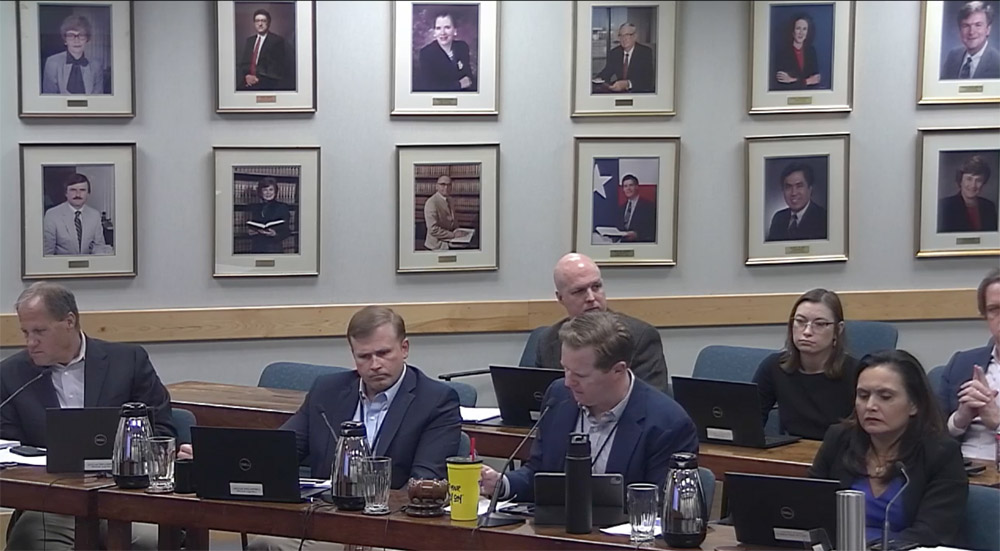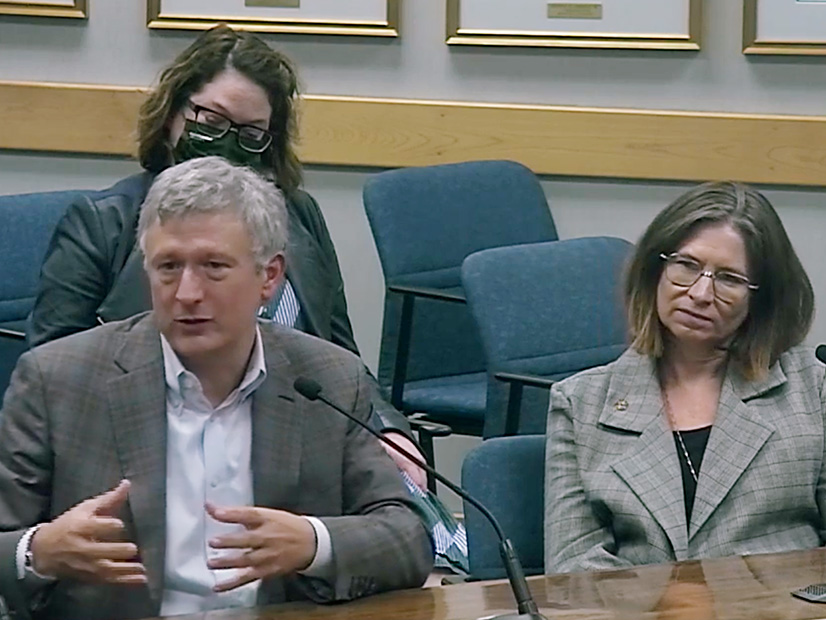Texas regulators last week got their hands dirty by popping ERCOT’s hood and discussing with stakeholders potential changes to an energy market that powers the state’s economy but has been virtually untouched for almost 20 years.
It became evident that the market needed a tune-up (or an overhaul) after February’s devastating Winter Storm Uri nearly crashed the grid and resulted in several days of non-rotating outages, hundreds of deaths, and billions of dollars in damage. The disaster led to leadership resignations at the Public Utility Commission and ERCOT and legislative bills that would alter the status quo.
“We’re tackling an enormous challenge,” PUC Chair Peter Lake said in kicking off the Thursday workshop. “We need and appreciate all the insight we can get.”
Lake, one of four new commissioners who have replaced the previous three, had words of caution for ISO stakeholders. Noting comments in the docket (52373) that he characterized as “focused on preserving profits and incumbent business models,” Lake said Senate Bill 2 and SB 3, the Texas legislature’s key bills in response to Uri, were “very much related to preserving reliability and accountability.”
“We don’t need comments telling us this crisis-based business model is just fine and we don’t need any changes,” he said, using his previous description of the ERCOT market. “That’s not the direction we got from the legislature and certainly not the changes the people of Texas are demanding. You can save your breath.”
At issue is the market’s reliance on scarcity pricing, capped at $9,000/MWh, designed to encourage new generation to take advantage of those prices. However, during the storm, about half of ERCOT’s thermal generation was forced offline, leading to the market’s inability to meet record winter demand.
Among the changes discussed during the workshop were tweaks to the operating reserve demand curve (ORDC), lowering the price cap, including renewables with firming capability in dispatchable generation, and adding new ancillary services to address ERCOT’s current use of reliability unit commitments.
Exelon echoed numerous comments in the docket when it suggested lowering the cap and widen the ORDC’s tail. Texas energy consultant Doug Lewin, who live-tweeted the workshop, said that proposal would “spread revenues out over more hours of the year, but provide less revenue” during extreme scarcity or crisis periods.
“Great ideas today,” Commissioner Jimmy Glotfelty said. “Whenever we do some improvements, there’s going to be some reaction by the market. Hopefully positive, but maybe negative, too, but I believe the market will adapt. We have a good blackboard of ideas we’re going to end up coalescing around that will improve this market for the good of reliability.”

ERCOT’s “wish list” of reliability initiatives, supplied by Woody Rickerson, vice president of grid planning and operations, included attracting and retaining flexible, dispatchable resources and encouraging resource owners to maintain dual-fuel capability and on-site fuel storage or energy storage.
Rickerson said the grid operator considers batteries to be a dispatchable resource and it will change its systems before the year is up to incorporate energy storage.
Lake and Commissioner Will McAdams both pushed back several times against renewable resources, bending to Texas Gov. Greg Abbott’s directive to incentivize thermal generation and allocate reliability costs to resources that can’t guarantee availability. ERCOT has almost 30 GW of installed wind capacity, and it expects utility-scale solar to grow from 7.8 GW to more than 28 GW by 2024.
“My term runs out Sept. 1, 2025. I do not want to be catching a falling knife of 70% renewables on our system as the dominant fuel source and trying to back it up,” McAdams said. “Me, personally, I don’t expect lot of significant changes come Jan. 1, but I do expect us to start conversations as this market adapts to the resource mix’s evolution to where we don’t suffer reliability issues moving forward.”
The PUC has set a schedule that includes four more workshops and contemplates a draft design by Oct. 21 and a final market design by Dec. 19.
Kenan Ögelman, ERCOT’s vice president of commercial operations, cautioned the commission about ERCOT staff’s ability to move quickly in making changes. He said ORDC changes could be implemented quickly, but a substantial rule change would be needed to lower the price cap from $9,000/MWh.
“The ancillary service type changes … will take longer as I try to get those into my system so that they move from the day-ahead market system into dispatch,” he said.
Commissioner Lori Cobos suggested the commission set up as many guardrails at the PUC as it can to shorten the timeline.
“All products are in ERCOT market rules,” she said. “The only difference here is to consider whether these new products would be better housed in PUC rules to provide more regulatory certainty. We set up the framework and let ERCOT implement the details.”
“The problem is, things tend to die in the stakeholder processes at ERCOT, and they die for a long time,” McAdams said. “Nothing ever comes out of them sometimes.”
The PUC’s next market design work session is scheduled for Sept. 16 and will focus on demand response, including residential.
“The big unknown,” Lake said of residential DR.
“We need to know what demand response in the residential world is already happening so we can get a better sense of how much is being addressed by market forces,” he said. “We don’t want to jump in and regulate something if market forces are already solving a problem.”
Weatherization Rule Published
The commission took time from the workshop to approve for publication a weatherization rulemaking that requires ERCOT generators and transmission service providers to complete by Dec. 1 “all actions necessary to prevent a reoccurrence of any cold weather critical component failure” that occurred during Winter Storm Uri (51840).
The first phase of the PUC’s development of “robust” weather emergency preparedness reliability standards is designed to “ensure the generation fleet is more resilient this winter than it was last winter,” Lake said, and to comply with statutory deadlines set by the state legislature.
The draft rules require generators to implement the winter weather readiness actions identified after the 2011 winter weather event. TSPs are directed to put in place key recommendations contained in a separate report following the 2011 storm.
The generation and transmission entities must file winter weather readiness reports detailing their compliance activities with ERCOT and the PUC by Dec. 1. Those forms must include a notarized attestation from the entities’ highest-ranking “representative, official, or officer with binding authority.”
ERCOT is required to conduct inspections of resources and transmission facilities for this winter, prioritizing the inspection schedule based on risk level. Violations are to be reported to the PUC for enforcement.
Stakeholders have until Sept. 16 to comment on the draft rules. The PUC is planning to have the rules in effect by Nov. 3.
The commission will work on the second phase of reliability standards, “a more comprehensive, year-round set” following an in-depth weather study currently being conducted by ERCOT and Texas’ state climatologist that is due early next year. (See Texas PUC Faces Sticky Issue in Setting Weather Rules.)
Securitization Hearings Conclude
The PUC on Wednesday wrapped three days of hearings on ERCOT’s request for a pair of debt-obligation orders to finance $2.9 billion in market debt stemming from high prices during the winter storm’s Feb. 12-20 emergency period.
After spending barely 90 minutes on the grid operator’s application to finance the $800 million owed to the market by its participants (52321), the various parties spent the following afternoon and morning digging into ERCOT’s proposal for a $2.1 billion market uplift to cover short pays to the market (52322). (See Texas PUC Hearings Begin on $2.9B ERCOT Securitization.)
ERCOT said it cannot “readily quantify” the uplift balance as it has “no way of knowing” which load-serving entities (LSEs) were exposed to real-time deployment adder (RDPA) charges and ancillary services costs in excess of the systemwide offer cap. The grid operator said it will have to rely on the LSEs themselves to quantify their exposure to those charges, as it does not have a way to quantify that amount.
“Accordingly, the final uplift balance will be the sum of all documented exposure by LSEs that is ultimately approved by the commission,” ERCOT said.
Asked by Cobos what data ERCOT could provide to help unwind the costs, Ögelman said staff knows which qualified scheduling entities (QSEs) could have affiliated LSEs and the headroom allocated to QSEs as a whole.
“That type of information could be useful in calculating exposure,” he said. “However, the unique circumstances with how that QSE fits into an LSE will make that an accurate number or an extremely inaccurate number. It’s hard to tie that back when there’s so much under the QSE umbrella.”
Ögelman said staff could likely share with PUC staff the number of QSEs that have affiliated LSEs, but they would be unable to break down the latter group.
“It’s almost like a candy shop,” he said. “There are lots and lots of flavors to how folks do their business arrangements.”
Adding to the complexity is the number of disputes among ERCOT and market participants over the February charges that could result in additional costs.
Among the parties to the uplift proceeding is Rayburn Country Electric Cooperative, which owes the market $640 million. The cooperative is involved in a dispute with ERCOT over $260 million in AS and RDPA charges. All disputes must be settled before bonds can be issued, according to House Bill 4492.
Rayburn also has an opportunity to securitize Uri costs under Senate Bill 1580, which applies only to cooperatives. Rayburn is searching for clarity as to whether it can opt out of SB 1580 and remain a party to HB 4492.
“What it will really boil down to is ability to securitize the full [amount] and whether the market will allow us to do that,” Rayburn CFO David Braun said. “That’s the biggest unknown at this point: trying to securitize all of this so ERCOT gets paid in full. The challenge is the timing doesn’t work well together.”
As of Aug. 2, the ERCOT market was short $2.98 billion from transactions during the storm.
Administrative Law Judge Hunter Burkhalter directed the parties to file their initial briefs Wednesday, with reply briefs due Sept. 8. McAdams asked parties who shared similar viewpoints to coordinate their comments so the commissioners could more easily digest their arguments.



